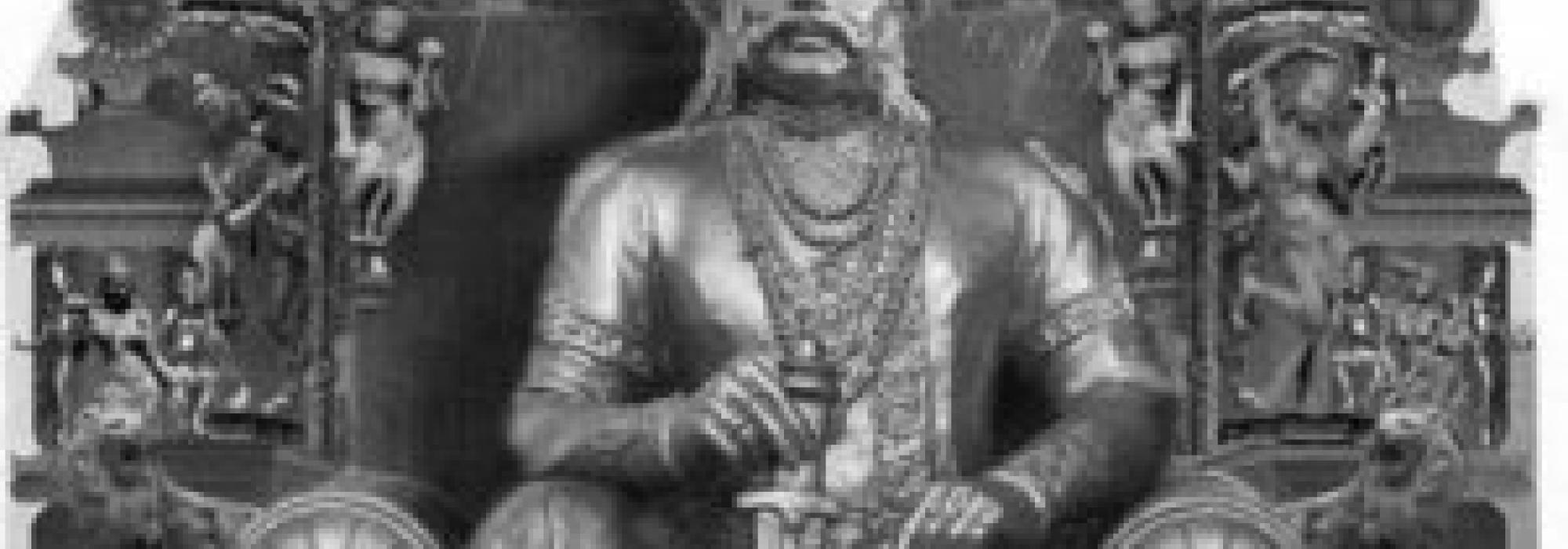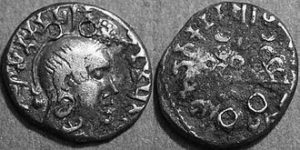We must observe the magnanimity of the Gupta period. This open-mindedness and magnanimity springs from Sanātana dharma and the people of that era had truly grasped the spirit of Sanātana dharma. There are many people who read the Vedas all their life but they fail to realize that there are parts of the Vedas that speak about the futility of the Vedas.[1] They don’t realize that we have to apply that learning on a daily basis.
In the context of Yājñavalkya speaking to his wife Maitreyī about brahman, he says, “na vā are brahmaṇaḥ kāmāya brahma priyaṃ bhavati! ātmanastu kāmāya brahma priyaṃ bhavati|... na vā are devānāṃ kāmāya devāḥ priyā bhavanti| ātmanastu kāmāya devāḥ priyā bhavanti| (Bṛhadāraṇyakopaniṣad 2.4.5)” We can recall that wisdom. It is not for the sake of brahman that the brahman is dear; it is because of the self that it is dear. The greatness of the Vedas lies in the recognition of the inevitability of the self. “Once you are aware of yourself, then keep me also aside,” says the Vedas and that is its greatness. This appears neither in the Bible nor in the Qur’an.
Kālidāsa, the pinnacle of our tradition, says in his mahākāvya Kumārasambhava (3.67) – “harastu kiñcit pariluptadhairyaścandrodayārambha ivāmburāśiḥ| umāmukhe bimbaphalādharoṣṭhe vyāpārayāmāsa vilocanāni||” The gist of this verse is: Even Śiva glanced at Pārvatī’s face and for a short while underwent turbulence, just as the oceanic tides go up and down upon moonrise; he looked at her beautiful lips with all three eyes.” That poet who could portray his favourite deity falling prey to emotional turmoil is a great representative of the Gupta culture! Kālidāsa’s sense of equilibrium is great – he can find solace by detaching from his highest ideal, the object of highest worship, and those values he considers the highest; he can retain his love for it in spite of showing their incompleteness. It is true that Śiva goes back to his normal state of mind. However, the poet’s stance is remarkable.
We see this in Vyāsa and Vālmīki as well: the Rāma who killed Vāli and abandoned Sītā ends up being a reverential figure; similarly, we have Kṛṣṇa who claps, roars, and dances on the battlefield rejoicing the death of Ghaṭotkaca, and yet remains the object of worship. Thus we find in these great heroes a little bit of deviation from the right note; it is not a discordant note yet it isn’t pleasant. But if one harps only on those aspects and declares that all this is useless and all these people must be ignored for they are worthless – this is not only foolish but also malicious and treacherous.
The Gupta era was free from such ignorant people. The necessary strength needed for a flower to blossom comes from how firmly the stalk is connected to the calyx; however if that firmness becomes a quality of the bud and the petals then the flower will not bloom. True kṣātra is in realizing that our life is the dynamic equilibrium that is seen amidst bindings-freedom, sacred-secular, visible-invisible, etc.
In the Śāntiparva, Bhīṣma says that it is incorrect for the king to be too sharp; it is also incorrect for him to be too soft; he should be like the sun in the spring season. He should not be like the sun that is covered by clouds in the rainy season; nor should he be like the ferocious sun that shines in summer. Indeed, such balance gives us a golden age. The Guptas gave this to us. The speciality of their kṣātra is that it had the necessary traditional culturing and sophistication.
Chandragupta Vikramaditya came from such a stock. Samudragupta had learned and mastered music, was endowed with mastery over poetry, and was a great warrior and general. Chandragupta Vikramaditya too, had acquired all these skills. There is so much to be said about his valour and courage; so many legends have built around him.
‘Vikramaditya’
In our classical-folk culture, ‘Vikramaditya’ has been a noble ideal. Our folklore made deities out of Shudraka, Vikramaditya, Shalivahana, and others. Shalivahana is the leader of the Shatavahanas. The Shatavahanas shine brighter than the Pallavas, Cholas, Cheras, Pandyas, Kadambas, and Chalukyas in South India. It is because of the Shatavahanas that Vedic culture strengthened in South India. Although they ruled the kingdom with their capital in Pratishtana on the banks of the Godavari, they had two other major centres: Dhanyakata in Andhra and Banavasi in Karnataka.
We find references that Shalivahana (or Shatavahana) became the founder of this dynasty, for he represented their life of valour and adherence to dharma. These people were brāhmaṇas by birth, kṣatriyas by profession. They were heroes who took their mother’s name with pride, thus showing the world that they are born of illustrious parents (and not just an illustrious father). They were large-hearted people who embraced both the Vedic way of life as well as the path of the Buddha.
One of the preemient kings of this dynasty was Shatakarni, a great warrior who performed the aśvamedha and other yajñas, thus upholding kṣātra. Several royal lineages of Sanātana dharma have seen such open-mindedness and magnanimity. One of the famous kings of the Shatavahanas was Gautamiputra who confronted the Shakas, the Greeks, and the Pahlavas (when they attacked India) and defeated them all. One can only imagine his valour and the expansion of his kingdom when we learn that he was given the title ‘Trisamudratoyapītavāhana’ (literally, ‘one who has drunk the waters of the three oceans’ suggesting that he had undertaken an expansion of his kingdom on all sides).
Chandragupta had made Ujjaini his capital. It was on the banks of the Shipra river. All the stories in our tradition related to Vikramaditya including the Vikram-Betal stories were developed around him. Some aver that Vikramaditya lived in Malwa during first century BCE. We have not found solid historical evidence for that. Therefore it is difficult to believe that proposition. The Vikrama Śaka was a new starting point for the calendar that was established by the Malwa Republic in memory of their great victory; it is not something that Vikramaditya established.
Chandragupta seems to have been the first ‘Vikramaditya.’ Over the years, ‘Vikramaditya’ became a sign of greatness and several renowned kings were hailed as Vikramadityas. In the Kalyana-chalukyas, we find six Vikramadityas. The word ‘aditya’ in this name was used in various ways such as Baladitya, Tarunaditya, Shiladitya, and so on throughout our history.
We find examples and evidences to show that Vikramaditya being a poet was not a cooked-up story. A great luminary of Alaṅkāraśāstra, Rajashekhara says in his Kāvyamīmāṃsā , “In Ujjain, Vikramaditya, Bhartrmenta, Kālidāsa, and others would display their poetic prowess in scholarly challenges.” Although Chandragupta was a king, without any airs or aloofness, he displayed his intellectual mettle, won the appreciation of scholars, and took the prize. Unless one has the heart of a poet, it becomes difficult to honour other poets. It is always difficult to ensure peace in a huge empire that is rich in food and resources. It is never easy to maintain cordial relations with people from distant lands as well as the neighbouring kingdoms.
We can show evidence of Chandragupta having composed some of the poetic segments of Kuntaleśvaradautya. Among the great achievements of Chandragupta is his extermination of the Shakas (Scythians) from India. The Shakas had come up to Ujjaini. Chandragupta successfully expelled them. His grandson Skandagupta drove out the Huns in a similar fashion.
The Guptas freed their kingdom from attacks from enemies. These are the primary evidences for their strength and martial capability. We also see that science and technology developed greatly in the Gupta period. If a country has to prosper, it needs to have a strong army and for this reason, science and technology must be in a state of constant development. When primitive man used stone weapons to hunt and fight, the emergence of iron weapons was indeed a great revolution; one need not elaborate on this.
But what is to be done? If newer weaponry keeps evolving, where is the possibility of sustained peace? But can we remain silent? Blind repetition of the mantra of peace will only lead to all-round destruction. It's everyone's aspiration that all the people of the world must become good. But is that aspiration attainable in reality? It is only when there is no world will everyone become good! It is only at the time of total annihilation that the world will be homogenous. The world is constructed from the three guṇas [sattva, rajas, tamas]. If the three guṇas become equal to one another, then it is the hour of dissolution. The imbalance of the three guṇas results in creation; the management of the three guṇas results in equilibrium and sustenance; the equalling of the three guṇas results in dissolution. This is what our philosophers say.
Passion and hatred are fundamental emotions in human beings. Nobody can completely root out these emotions. But one must constantly keep it under check. It is akin to regularly removing the weeds that grow in the garden behind the house. If one wants to get rid of the weeds once and for all, then one must apply a layer of concrete in the backyard. In such a case, not a single plant will grow there. Not a single drop of water will be absorbed. That is dissolution. Therefore, a constant fight for equilibrium is inevitable. And when fighting is inevitable then we must fight to win; and one needs a decisive plan of action for victory. If one asks, Why should we win, it is because we want happiness in life. I have to fight for the identity and the happiness of myself and my people. It is only then that dharma will be established. So will be viveka.
To be continued Translated by Hari Ravikumar and Sandeep Balakrishna


















































